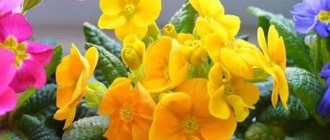- September 16, 2018
- Houseplants
- Natali Michaelis
Monstera is a vine with rather large and beautiful leaves. It is valued by many gardeners for its unpretentiousness and exotic appearance. If you provide an indoor flower with good conditions, it will grow quickly. In some cases, the plant may bloom, although it is grown primarily as an ornamental foliage crop. A huge vine with large cut leaves - that’s what a monstera is. Home care involves creating a microclimate close to the tropical. Read our article about how to do this correctly for a novice gardener.
Botanical description
Monstera is a prominent representative of the large Araceae family, whose natural habitat is considered to be the warm and damp forests of South and North America. This flower is actively used for landscaping offices and apartments.
The leaves are quite large in size (up to 1.5 meters in diameter), as well as a leathery dark shell. When the plant is in the young phase, they are heart-shaped and whole, but over time the shape of the leaf changes noticeably, becoming more interesting - numerous holes of various sizes appear, as if cut by a sharp object. The cuttings have an oblong shape, which can reach 1 meter in adult plants.
The stems are strong and curly. Aerial roots descend from the main nodes and have a cord-like shape. They always strive for the surface of the soil, after which they take root with the main stem as soon as they reach it. Aerial roots perform several important functions: receiving additional nutrition, moisture from the air, and also creating strong support.
Monstera can produce several dozen aerial roots, but even this number will not be enough to hold the heavy stem of the vine. In this regard, some of the roots do not sink into the soil, but are attached to the wall like suction cups.
Monstera blooms extremely rarely. During this period, cob-shaped inflorescences are first formed, which are covered with a greenish blanket, after which the flower opens over time. If the inflorescence has not been removed, then over time the fruit will ripen, which is a cob of berries.
Like most other vines, monstera needs good support. Setting the direction of growth by tying the main stem must begin as early as possible, since over time it becomes lignified and becomes less flexible. To create support, it is best to use a rigid mesh, which is stretched using strong cords.
Dormancy and flowering period
Monstera is an evergreen plant without a pronounced dormant period. When daylight hours decrease and the ambient temperature drops below +20 °C, it slows down its growth. In addition, in winter it does not require fertilizers; watering becomes more scarce. This period gives the vine a break and the opportunity to begin to develop quickly again in the spring.
In nature, the plant blooms with large, up to 30 cm tall, white or light cream flowers, reminiscent of corn cobs. Unfortunately, this practically does not happen at home. Only sometimes can flowering and fruiting be achieved in large greenhouses or winter gardens.
About 8–10 months after flowering, Monstera fruits are fully ripened. Its berries are edible, as reflected in the name - monstera deliciosa or tasty.
Monstera varieties
Answering the question of how to care for monstera, it is worth noting that there are more than 50 varieties of this ornamental plant in the genus. They differ markedly from each other in appearance, structure, size, and so on. However, most of them grow only in natural habitats.
Only five species are used as pets.
- Delicious. Young leaves are heart-shaped without characteristic cuts, but over time they become deeply dissected. The leaves reach 60 centimeters in diameter. Flowering is accompanied by the formation of a cob-shaped inflorescence, which does not exceed 25 centimeters in length and is always wrapped in a blanket of light leaves with a greenish tint. In an apartment, the plant will not exceed 3 meters in height. If you properly care for the monstera, you can admire its flowering every year. An artificial hybrid form has recently been developed. It grows more slowly, is more demanding of care, but has better decorative characteristics, unlike its predecessor.
- Adanson. This variety is characterized by thin ovoid leaves, on which there are many small holes. The inflorescence has a cob-shaped shape and reaches 13 centimeters in length. In home habitats it practically does not bloom.
- Borziga. One of the varieties of delicious monstera. The main differences from other representatives are small leaves and a thinner stem.
- Oblique. The leaves are oblong, lanceolate or elliptical, without cuts. Attached to the main stem using short petioles. The spadix consists of 2-3 flowers, reaching a length of 4 centimeters.
- Punched (holey). The main distinguishing feature of this species is the unequal leaves, widened at the base. Numerous holes are unevenly distributed across the entire surface, giving the flower a unique decorative appearance. The inflorescence is covered with a white blanket and is of medium size.
Did you know that the cobs of the delicious monstera are actually edible? These plants are grown in their homeland for industrial purposes. The berries have a sweet and sour taste, similar to a mixture of pineapple and strawberries. At least 10 months must pass from the moment of flowering to the full ripening of the fruit. Due to the large amount of calcium oxalate in the fruit, there may be a slight burning sensation in the mouth even from fully ripe berries. Remember that unripe fruits are extremely poisonous! The best way to determine the degree of ripening is to try to separate a few scales from the cob. For ripe fruits they will open without problems.
Is it possible to keep Monstera deliciosa at home?
The Monstera deliciosa plant is truly very impressive and can become a real decoration for any apartment. However, many lovers of decorative indoor crops are still interested in whether it is possible to keep it at home. Such fears are connected primarily with the terrifying name of monstera and the legends that once circulated about it.
In fact, lovers of indoor flowers who grow this plant in the apartment have absolutely no reason to worry. Monstera culture is even useful in some ways. Its leaves emit simply huge amounts of oxygen and moisture, which has a beneficial effect on the microclimate of the room. Monstera leaves are also capable of absorbing formaldehyde, which is known to be contained in chipboard, from which modern furniture is also made.
Actions after purchase
You can buy monstera in almost every flower shop. How to care for a plant immediately after purchase? This question worries many, because the subsequent development of the flower will depend on your actions. Remember that a small pea sprout will quickly grow into a large vine. However, this will require creating the proper quality of caring for monstera at home (pruning, temperature conditions, watering, and so on).
First of all, you should pay attention to 4 main parameters that are required to be fulfilled immediately after purchasing a pet:
- Transfer. It is recommended to transplant the flower into another pot immediately after purchase, since a long stay in the substrate for transportation can negatively affect the development of the vine. The capacity is selected taking into account rapid growth. Do not forget that before transplanting into a pot, you should pour a layer of drainage, which consists of broken bricks or crushed stone.
- Prevention of diseases. When examining a flower while still in the store, the initial stages of disease development or traces of pest activity may go unnoticed. In order to prevent both at once, it is necessary to alternately treat the monstera with small doses of a fungicide and an insecticide.
- Choosing a location. It is necessary to select a sufficiently illuminated and warm place that would allow further installation of the support. Most often, this flower is located in the most illuminated corner of the room. Remember that moving a grown vine will be extremely inconvenient and difficult.
- Humidity. In order to speed up the adaptation process of the flower, it is necessary to provide it with conditions of high humidity. It is recommended to add a growth stimulator to the water when spraying monstera, but this is at the request of the grower.
Over time, you will get a huge decorative vine that will fit perfectly into any interior if you follow the basic rules of care at home. The monstera flower will delight everyone who sees it with its beauty.
Growing monstera: planting, care and propagation of plants
Monstera is a tropical plant native to South America, brought about three to four centuries ago.
Much water has passed under the bridge since then, but Monstera is still one of the most favorite plants for the office and home. The name was not given to it by chance: its huge leaves really resemble the paws of some kind of monster.
One of the main advantages of the plant is that it is perhaps the most unpretentious plant.
Requiring a minimum of care, monstera is nevertheless capable of growing to truly gigantic sizes and decorating a room of any size, except small ones.
The fact is that this “flower,” being from tropical forests, is not accustomed to being limited by the concepts of space. With proper care, the plant can grow to amazing sizes.
Cultivation care
Most vines are considered quite unpretentious and easy to care for crops. The main difficulty will be to create strong supports for shoots growing at tremendous speed. You should also not forget about maintaining high soil and air humidity - all these are important rules of care. The monstera flower is considered one of the most unpretentious plants, but this does not mean that it does not require care.
Legend
The name of this flower itself comes from the Latin word Monstrum, meaning “monster”. This is connected with one of the legends that once circulated about this plant. The conquerors of the new continent - America - often found under the monstera, which in nature reaches simply enormous sizes, the remains of small animals and their comrades, “pierced” by its aerial roots. Because of this, rumors began to circulate among the settlers about a vampire tree killing people.
But, of course, the monstera was not to blame for the death of the pioneers in the jungle. A dying person is always subconsciously looking for at least some kind of refuge. And the wide leaves of the monstera in the jungle were perfectly suited for this purpose. The aerial roots of the plant pierced, of course, the skeletons of dead people and animals. This eventually came to light. However, the terrifying name for the monstera stuck and has been preserved to this day.
Lighting
Have you thought about how to grow a monstera flower? How to care for it so that it pleases the eye with its beautiful green leaves? Monstera is a light-loving plant, so for full growth it will need a well-lit place, but it is better to avoid direct sunlight. A flowerpot with a flower should be placed in a room whose windows face south, west or east. It is highly not recommended to keep it in the northern part of the building. It is worth choosing the most illuminated area of the room. If the flower does not get enough light, the leaves will begin to noticeably become smaller, and the aerial roots will become weak and thin.
How to care for monstera
The house flower Monstera is loved for its unpretentiousness. The plant is easily satisfied even with artificial light and does not require extreme wintering conditions.
Lighting
For monstera, prolonged exposure to direct sunlight and deep shade are equally destructive.
The best lighting for her is bright diffused light or partial shade. The optimal length of daylight is 12 hours.
For this vine there is no difference between natural and artificial lighting. It grows well under lamps.
A signal that the monstera does not have enough light will be smaller leaves without openwork cuts.
Signs of sunburn are pale leaves covered with yellow spots.
Location
Monstera is placed not on the windowsill, but on a stand. The flower is placed near windows facing west or east. If the windows face south, it is better to move the pot deeper into the room.
Monstera does not tolerate frequent movements.
Therefore, it is recommended to think in advance about a place where the overgrown vine will not interfere. They also take into account that over time it will need supports.
The flower should not be placed where it will be exposed to cold air from an air conditioner or from a window when ventilating. In addition, it should not be located close to the radiator or heaters.
Temperature
Like all indoor flowers, monstera does not tolerate drafts and sudden changes in temperature.
Monstera prefers moderate temperatures:
- 20-25°C in summer;
- 18-20°C in winter.
At temperatures below 15°C the vine stops growing, below 10°C it dies.
The hotter the room, the faster the monstera grows.
But to prevent it from suffering from overheating, you will need to increase the humidity.
Monstera does not have a pronounced dormant period. But it is recommended to let it rest at a low temperature for at least a month.
Humidity and spraying
For health, Monstera requires a humidity of more than 60%. It is supported by spraying the air or the plant itself.
It is recommended to do this on average once every 2 days. If the temperature exceeds 26°C - every day. If the room is colder than 16°C, spraying is stopped.
For the procedure, water at room temperature that has been standing for at least 24 hours is used.
"Polishing"
In addition to spraying, monstera requires regular wiping with a damp cloth.
The dust that collects on the leaves harms the plant and closes the pores, forming a film.
It is not possible to remove dust only by spraying. If you limit yourself to this procedure, unsightly stains will remain on the plates.
To keep the leaves glossy, wipe them once every 1-2 weeks. For this you can use:
- aerosol formulations from flower shops, such as Bona Forte leaf gloss;
- weak vinegar solution;
- milk diluted with water;
- a mixture of water and lemon juice.
Only mature leaves are wiped. They act without pressure, moving the napkin from the petiole to the tip of the leaf. First, use a cloth soaked in clean water, then in a “polishing” compound.
Watering
Monstera is watered with settled warm water. Do not allow liquid to stagnate in the pan.
In summer, watering should be plentiful. The frequency is determined by the top layer of soil. As soon as it dries, the plant is immediately watered.
In winter, wait until the soil dries out by ¼ of the pot. This requires less water at a time.
A sign of insufficient watering is lost moisture, wrinkled leaves.
If the plant is flooded, this will lead to rotting of the roots and the appearance of fungus on the trunk.
Feeding and fertilizers
As a fertilizer for monstera, liquid formulations or granules intended for any decorative foliage plants are used. She has no special requirements for the composition of the fertilizer.
Recommended drugs are shown in the table.
| Brand | Compound | The main task | Photo |
| Bona Forte (Red) | N:P:K:Mg - 5:3:4:1 Succinic acid Microelements Vitamins | Stimulates growth Brightens foliage Increases immunity | |
| Bona Forte (Blue) | N:P:K - 5:3:4 Humate 0.5% 9 microelements | Prevents leaf shedding Protects against yellowing | |
| Good power | N:P:K - 5:2.5:3 Humate 0.3% B1, PP Succinic acid | Activates growth Increases immunity | |
| ETISSO | N:P:K - 7.1:3.1:4.2 | Activates growth Adds brightness to foliage |
Monstera is fed only from the end of March to the beginning of September. This should be done once every 2-3 weeks.
Expert advice: “Monstera only needs half the dose recommended by the manufacturer. Especially if the flower grows in partial shade.”
Some gardeners use “folk” remedies as fertilizers for Monstera:
- mullein infusion (once a year, in summer);
- infusion of banana peel with the addition of crushed eggshells and magnesium sulfate;
- sugar dissolved in water.
A sign that Monstera lacks nutrients is that the leaf blades turn yellow and dry out.
You can learn more about caring for Monstera from the video.
Garter and supports
Supports begin to be used when the monstera becomes taller than 50 cm. If they are not provided, the plant will break under the weight of its leaves.
For young specimens, sticks wrapped in coconut fiber are used. For larger ones, use a wooden lattice attached to the wall, or tie it directly to the furniture.
Expert advice: “Cover the monstera support with moss and moisten it regularly.”
You can make a support for a short monstera yourself using the following instructions:
- Take a stick or plastic tube with a diameter of 2-3 cm.
- Tie sphagnum moss to it with twine.
- Wrap it in large mesh plastic mesh and secure it with fishing line.
- Place the support in the center of the monstera pot.
- Tie the trunk to the support in several places using twine. Do not tighten it too tightly.
- Secure aerial roots to the mesh.
This support is installed when replanting a plant.
You can see how the monstera is tied in the video.
Pruning and rejuvenation
Monstera does not require formative pruning. Only dried leaves are removed as they die.
Rejuvenation is resorted to if the monstera has slowed down its growth and dropped its lower leaves. The procedure is carried out in the spring, immediately after the end of the rest period.
The top of the plant with 2-3 nodes is cut off. This should stimulate the side buds.
The cut site is sprinkled with crushed coal, and the resulting cutting is used for propagation.
Temperature
What else does home care include? Monstera is a light-loving plant, but there are no strict requirements for maintaining the temperature regime. Although the flower grows noticeably faster at high rates. In autumn and spring, the favorable air temperature is +20…+25 °C. Liana reacts normally to the summer heat. In winter, it is strongly recommended to reduce the temperature to +17…+19 °C. Temporary cooling will be required for subsequent flowering. It is also necessary to avoid cold drafts at any time of the year.
Biological features
Monstera deliciosa has earned its popularity among lovers of indoor plants primarily for its relative unpretentiousness. Growing this decorative crop will not be difficult even for an inexperienced gardener. The advantages of monstera, among other things, include a high degree of shade tolerance.
In the wild, this tree grows under the canopy of taller tropical giants. Therefore, he usually does not have enough sunlight in the jungle. This is what explains the feathery structure of the leaves of the plant. This shape allows the crown to receive the maximum amount of light. In addition, the dissected leaves do not retain water during tropical rains. Consequently, the roots of the plant receive a sufficient amount of moisture.
Monstera belongs to the class of shade-tolerant plants. However, in a room, and especially in winter, it should still be placed closer to the window. With a lack of ultraviolet radiation, this plant develops worse. The crown of Monstera deliciosa thins out, the internodes lengthen, and the leaves become solid, losing their spectacular dissection.
The soil
When answering the question of how to care for monstera at home, one cannot fail to mention the quality of the soil. Depending on the degree of maturity of the vine, the composition of the soil also changes. For young plants, slightly acidic and neutral soil is best. It can be prepared at home by mixing humus, turf, peat and sand in equal quantities. Optimal acidity is considered to be 5.5-6.0 pH. Deciduous soil can also be included in the soil as the vine grows.
What flower arrangements can be made?
Monstera can live in the same pot with other plants. Philodendron or scindapsus are added to it.
Pots with monstera and other foliage plants are often combined into one ensemble:
- dracaena;
- yucca;
- ficus;
- chlorophytum.
Of the succulents, place a money tree or a Decembrist next to the monstera. You can complement the composition with a pike tail.
Conditions for flowering
On the Internet, many flower growers complain that the vine does not want to bloom. However, at home it is possible to achieve flowering only of the delicious monstera. To do this, you should create conditions that are as close as possible to a tropical microclimate:
- Bright lighting. The flower should receive a sufficient amount of diffused sunlight both in summer and winter. To do this, you can resort to using additional lighting using special lamps.
- High humidity. The liana needs daily spraying. On hot days, this procedure should be carried out several times a day.
- Loose soil. The soil for a houseplant should not only be nutritious, but also loose enough so that water and air can easily pass through it.
- Spacious potty. Perhaps Monstera is one of those crops that absolutely cannot tolerate crowded spaces. When replanting, the container should always be selected “for growth” so that the root system does not touch the walls of the pot.
- Aerial roots. They can be helped to take root directly in the pot or placed in water bottles. Under no circumstances should you cut off the roots!
If you follow all these rules, you will be able to grow a large and beautiful monstera. Caring for a plant at home (photo of the fruit is shown above) is not such a difficult task. However, if you chose this crop to enjoy beautiful flowering, you made the wrong choice, since flower stalks are formed exclusively on old specimens, and not on young plants.
Monstera oblique (unequal-sided), or ampelous
Monstera oblique got its name because of its unusual shape. Also, the unequal-sided monstera is sometimes called the ampelous monstera. You can recognize it by the following characteristic features:
- lanceolate or oval leaves without pronounced symmetry;
- the leaves have elegant openwork slits reminiscent of lace;
- the cuttings are long, thinned at the ends and widened towards the base;
- in adult specimens living in natural conditions, the length of the sheets can be 80-90 cm.
There are many legends and myths associated with this plant; its name translates as “monster”
The flower grows well in a warm room (if there is no extreme heat) with good ventilation. Loves moderate shade, feels worse in direct sunlight. If there is little light, the leaves gradually become smaller.
The list of basic care measures includes washing the leaves with a damp cloth and spraying with a spray bottle. Propagation usually occurs by cuttings. You can grow a flower from seeds, but this is a rather long, labor-intensive process. Up to four years of age, transplantation is done annually, then every two years. Fertilizing is carried out once every two weeks from early spring to the end of summer; mineral complex fertilizers are used for indoor flowers.
The birthplace of the flower is the tropical jungle of South America
Reproduction methods
What about care and reproduction at home? Monstera should be called not just an unpretentious plant, but a tenacious plant that perfectly adapts to almost all living conditions. The culture easily reproduces independently by vegetative means. At home, this can be done in five different ways:
- Apical cuttings. To do this, you need to cut off the top with several leaves, and then put it in a jar of water. As soon as the first roots appear, the cuttings can be planted in a large pot with light soil. What happens to the main stem after cutting off the top? Side shoots will begin to form on it, as a result of which the monstera will again begin to grow in height.
- Stem cuttings. This is the most common propagation method. It is used primarily to rejuvenate old specimens with bald leaves. The stem must be cut into pieces so that at least one bud remains on each. After this, the cuttings take root in a mixture of wet sand and peat, but before this, the planting material must be slightly dried and treated with coal powder. If there are aerial roots on the cuttings, then they must be laid around the perimeter of the flowerpot, lightly sprinkled with soil. Up to three specimens can be planted in one pot. To make the rooting process faster, the cuttings should create greenhouse conditions. To do this, the stems are covered with glass jars or polyethylene. Don't forget to regularly ventilate the cuttings.
- Lateral processes. You can root not only the upper part of the monstera, but also its side shoots. Such shoots can be found on any flower, even the youngest. All actions are performed by analogy with rooting the apical cutting.
- Leaves. The second most common method of propagating monstera after stem cuttings. The leaf is cut at the very base; a small part of the stem (5-8 centimeters) is captured. After this, the planting material is placed in a jar of water to form a dense tuber of roots. Only after a sufficiently developed root system has formed can the cuttings be planted in a pot with a light substrate.
- Air layering. Perhaps the most difficult method of propagation, not counting seed. First you need to select a side shoot that has several aerial roots. At the very base we wrap the stem with damp sphagnum, fixing it with cling film. Moss must be moistened daily with warm water. As soon as the first roots form, the shoot is carefully trimmed, treated with growth stimulants and planted in the soil.
The seed propagation method is used extremely rarely, so there is no point in discussing it. Seedlings grow quite slowly - in the first couple of years of life, a maximum of five leaves can form.
To prevent the cuttings from rotting in the jar, it is recommended to use boiled or well-settled rainwater. You should also add one tablet of activated carbon to the jar to prevent the development of various diseases. Before planting in the ground, the cuttings must be lightly washed with running water, and then soaked for 10 minutes in a pale solution of potassium permanganate.
Diseases and other problems
What else does proper home care include? Monstera, like any other indoor plant, is susceptible to diseases and pest attacks.
To avoid such problems, you must follow a number of important rules:
- When yellow leaves appear, reduce the frequency of watering. Due to excess moisture, root rot may develop, so it is recommended to transplant the flower into a new pot with dry soil.
- Brown spots on the leaves indicate a lack of moisture. Abundant watering and spraying can correct the current situation.
- Symptoms of excessive light include leaf discoloration. This can trigger the development of a disease called chlorosis. A diseased flower can be cured by using a specialized solution that contains iron.
If you follow simple rules of care at home, the monstera flower (photos are presented in the article) will grow into a lush decorative vine, which will thank its owner not only with a beautiful appearance, but also with clean, healthy air.
Description. Benefit and harm to humans
Monstera (Monstera) is a very large plant in the form of an evergreen vine. The study of Monstera is still ongoing and is currently classified as a member of the Aroid family (Araceae).
Monstera leaves are green, perforated and dissected, half a meter long. The juice of the leaves is poisonous and, if it comes into contact with the mucous membrane, causes various reactions: swelling, inflammation, loss of voice, intestinal disorders, dysphagia (swallowing disorder) and numbness.
Indoor monsteras grow up to several meters in length, growing into huge thickets of vines. They crawl along supports using aerial (adventitious) roots. An interesting fact is that if the monstera loses contact with the ground, it will not die, but will live fully on other plants (epiphyte).
Monstera flowers and bears fruit in the form of berries.
Despite its horrific past, the modern house monstera is valued not only for its exotic appearance, but also for its beneficial qualities. During the daytime, monstera leaves release a large amount of oxygen and make the indoor air more humid. They absorb formaldehyde vapors and electromagnetic radiation, ionize the air and evaporate excess moisture.
But at night, the process of photosynthesis completely stops and the plant begins to absorb oxygen in huge volumes. It is for this reason that it is not recommended for children's rooms and bedrooms.
Monstera continues to be ascribed supernatural, but now positive, properties. It is believed that it has a positive effect on the nervous and immune systems, develops intelligence and intuition, and increases performance. This reputation has made the monstera an inhabitant of office premises, classrooms and educational institutions. Psychologists and esotericists love this plant.











